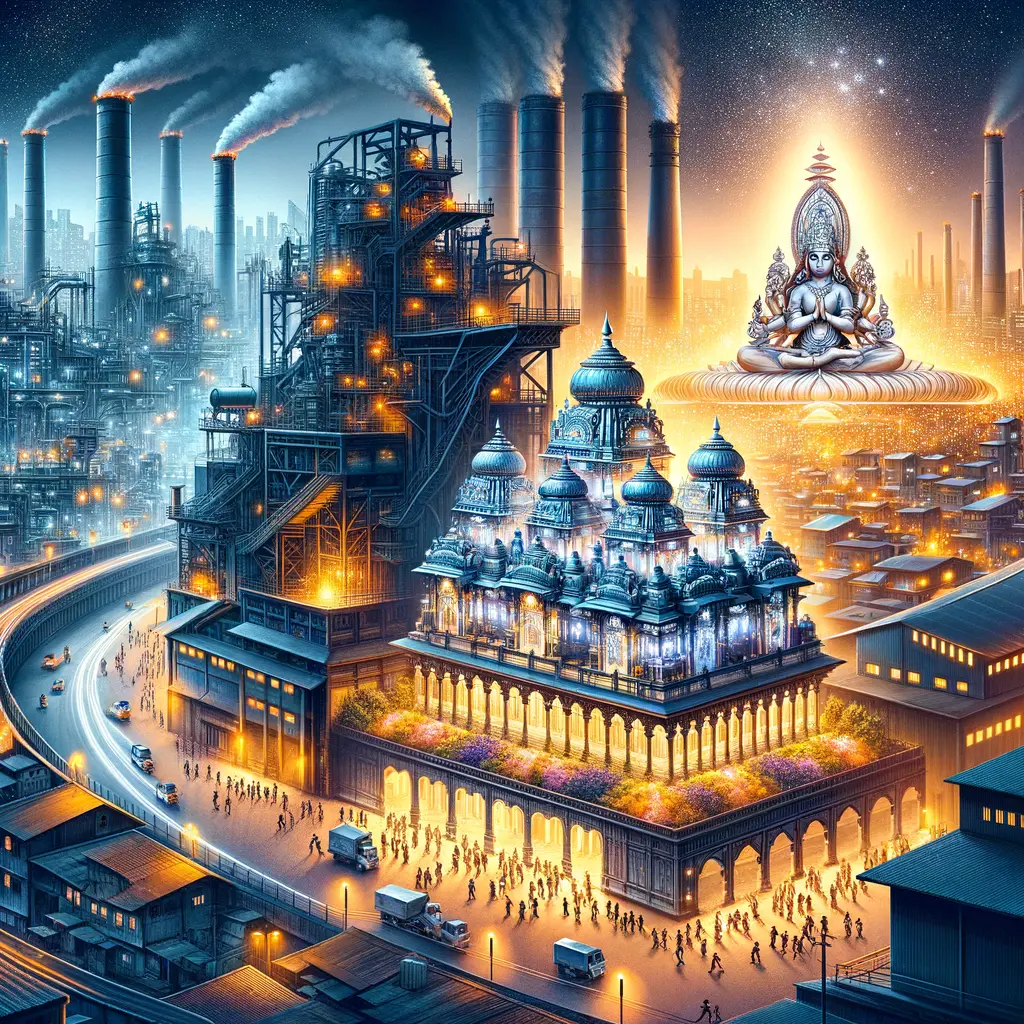
Bokaro Steel City: A Jewel of Jharkhand
Nestled in the heart of Jharkhand, Bokaro Steel City stands tall as a proud symbol of industrial progress and modernity. Home to one of India’s largest steel plants, the city is a bustling hub of economic activity and cultural diversity. With its wide roads, green parks, and well-planned infrastructure, Bokaro Steel City is a testament to the vision and hard work of its founding fathers.
Founded in 1961, Bokaro Steel City was envisioned as a key player in India’s quest for self-sufficiency in steel production. The Bokaro Steel Plant, operated by the Steel Authority of India Limited (SAIL), was established with the help of the Soviet Union and Germany, and it quickly became one of the most efficient and productive steel plants in the country. Today, the plant produces a wide range of steel products, including hot and cold-rolled coils, wire rods, and pig iron, which are used in various industries such as construction, automotive, and infrastructure.
Apart from its industrial significance, Bokaro Steel City is also known for its vibrant culture and rich heritage. The city is a melting pot of different communities, including Bengalis, Biharis, Punjabis, and tribal groups, which have contributed to its unique cultural tapestry. The residents of Bokaro Steel City are known for their warmth and hospitality, and visitors are often struck by the sense of camaraderie and unity that pervades the city.
One of the highlights of Bokaro Steel City is its beautiful parks and gardens, which provide a welcome respite from the hustle and bustle of urban life. The City Park, located in the heart of the city, is a popular spot for picnics and evening strolls, while the Jawaharlal Nehru Biological Park is home to a wide variety of fauna and flora, including tigers, leopards, and peacocks. The Jayanti Sarovar, a picturesque lake located on the outskirts of the city, is another popular attraction, particularly during the winter months when migratory birds flock to its shores.
For those interested in history and culture, Bokaro Steel City has several interesting sights to offer. The Bokaro Steel Plant itself is a marvel of modern engineering and technology, and visitors can take guided tours to learn more about the steel-making process. The Bokaro Steel City Museum, located in the heart of the city, showcases artifacts and exhibits that chronicle the history of the steel plant and the city itself. The city is also home to several temples and mosques, such as the Bokaro Ayyappa Temple and the Jama Masjid, which are popular pilgrimage spots for locals and tourists alike.
In terms of education and healthcare, Bokaro Steel City is well-equipped with a number of schools, colleges, and hospitals that cater to the needs of its residents. The Bokaro Institute of Technology, established in 1986, is one of the premier engineering colleges in the state and has produced many successful professionals over the years. The Bokaro General Hospital, on the other hand, is a state-of-the-art medical facility that provides high-quality healthcare services to the people of the city and surrounding areas.
Despite its industrial progress and modern amenities, Bokaro Steel City has managed to retain its connection to nature and the environment. The city is surrounded by lush green forests and hills, which provide a picturesque backdrop to its urban landscape. The Bokaro River, which flows through the city, is a lifeline for the local population and supports a variety of flora and fauna. The city also has several parks and wildlife sanctuaries, such as the Birsa Munda Park and the Mahatma Gandhi Zoological Park, where visitors can enjoy the beauty of nature up close.
Why Bakaro is Famous For?
Bokaro is primarily recognized for its steel industry, home to one of the largest steel plants in the world, Asia, and India, called the Bokaro Steel Plant. Established in 1964, it has been a significant industrial hub in the region.
The ideal time to visit Bokaro is from October to March, during which the city hosts various festive celebrations like Durga Puja, Diwali, Christmas, and the new year with great enthusiasm. In addition to its steel production, Bokaro offers beautiful lakes, picnic spots, and lush green spaces that appeal to nature lovers and picnickers. The Garga Dam, located near Bokaro Railway Station, is a popular choice for picnics among the locals.
For those interested in shopping and cultural activities, City Centre in Sector 4 and community centers host regular plays and events. Bokaro represents a blend of small-town charm and urban development, making it an intriguing destination for visitors looking to experience the evolving landscape of a growing city. A visit to Bokaro promises a rewarding experience for anyone seeking a glimpse of vibrant Indian culture amidst a backdrop of progress and prosperity.
In conclusion, Bokaro Steel City is a shining example of what can be achieved through hard work, dedication, and vision. From its humble beginnings as a small town to its current status as a major industrial and cultural center, the city has come a long way in a short span of time. With its modern infrastructure, diverse population, and vibrant culture, Bokaro Steel City is a true gem of Jharkhand and a model for other cities to emulate. Whether you are interested in history, culture, or simply looking for a peaceful getaway, Bokaro Steel City has something for everyone. So, next time you are planning a trip to Jharkhand, make sure to include Bokaro Steel City in your itinerary – you won’t be disappointed!
